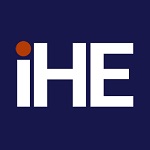No 2016:2: Innovative treatments for cancer in Europe -Value, cost and access
Ulf Persson ()
Abstract:
New reimbursement models will help patients get access to the next generations cancer medicines
A new report from the Swedish Institute for Health Economics (IHE) analyses the access to cancer medicines in twelve European countries, including Sweden, Denmark, Norway and Finland. The report highlights how different countries balance the health care systems’ limited resources with the demand of equal access to modern cancer drugs. The report specifically focuses on skin cancer, non-small cell lung cancer and myeloma.
Both the number of people diagnosed with cancer and the number of persons who live with the disease are currently increasing in all of Europe, which implies growing societal costs of cancer. This coincides with the introduction of a new generation of cancer drugs to the market. In 2015, there were over 800 new molecular entities under development. The new drugs bring hope to those diagnosed with cancer but also put a lot of stress on the health care systems, both medically and financially.
The sales of cancer medicines in Europe increased from €3 to €11 billon between 2003 and 2012. The increase was ongoing until 2009 after which it levelled out and in some instances even decreased, which can likely be explained by budget restrictions in the wake of the economic crisis combined with patent expirations. However, the cost for cancer medicines should be viewed in a broader context. For instance, the cost of cancer medicines increased at a slower pace compared to health care expenses in general.
New medicines are expected to play an important role in reducing the societal burden of cancer but it will require evaluations and solid economic governance to maximise its added value. Today, there are significant differences in the uptake of medicines between countries. The largest gap is found between Western and Eastern Europe but there are also differences between countries with similar purchasing powers. Several countries have earmarked funds to secure the uptake of innovative medicines by establishing specific innovation funds or separate reimbursement lists. Although this may contribute to improved uptake of medicines, measures must be taken to ensure that it does not result in unwelcome consequences elsewhere in the health care system.
Launching a new medicine has always incorporated some degree of uncertainty about the product value, but the level of uncertainty is increasing as more highly specialised therapies, i.e. personalized medicines, are introduced to the market. As attempts to manage the situation we are currently witnessing experiments with innovative payment models. Even though it is unlikely that there is a single model with an optimal fit for all health care systems, products and therapeutic areas, a common denominator is often that the payment models hinge on follow-ups of outcome data after treatment implementation. The development is of interest both as it will impact patients’ access to medicines but also as it will have indirect effects on tomorrow’s research and development of new medicines.
Any questions should be directed to Fredrik Moen, Director for external relations.
Comparator reports webpage »
Keywords: cancer Europe Value cost access 2016
Full text files
IHE-Report-2016_2.pdf
Questions (including download problems) about the papers in this series should be directed to Annette Persson Dietmann ()
Report other problems with accessing this service to Sune Karlsson ().
RePEc:hhs:ihewps:2016_002This page generated on 2024-09-13 22:15:23.

